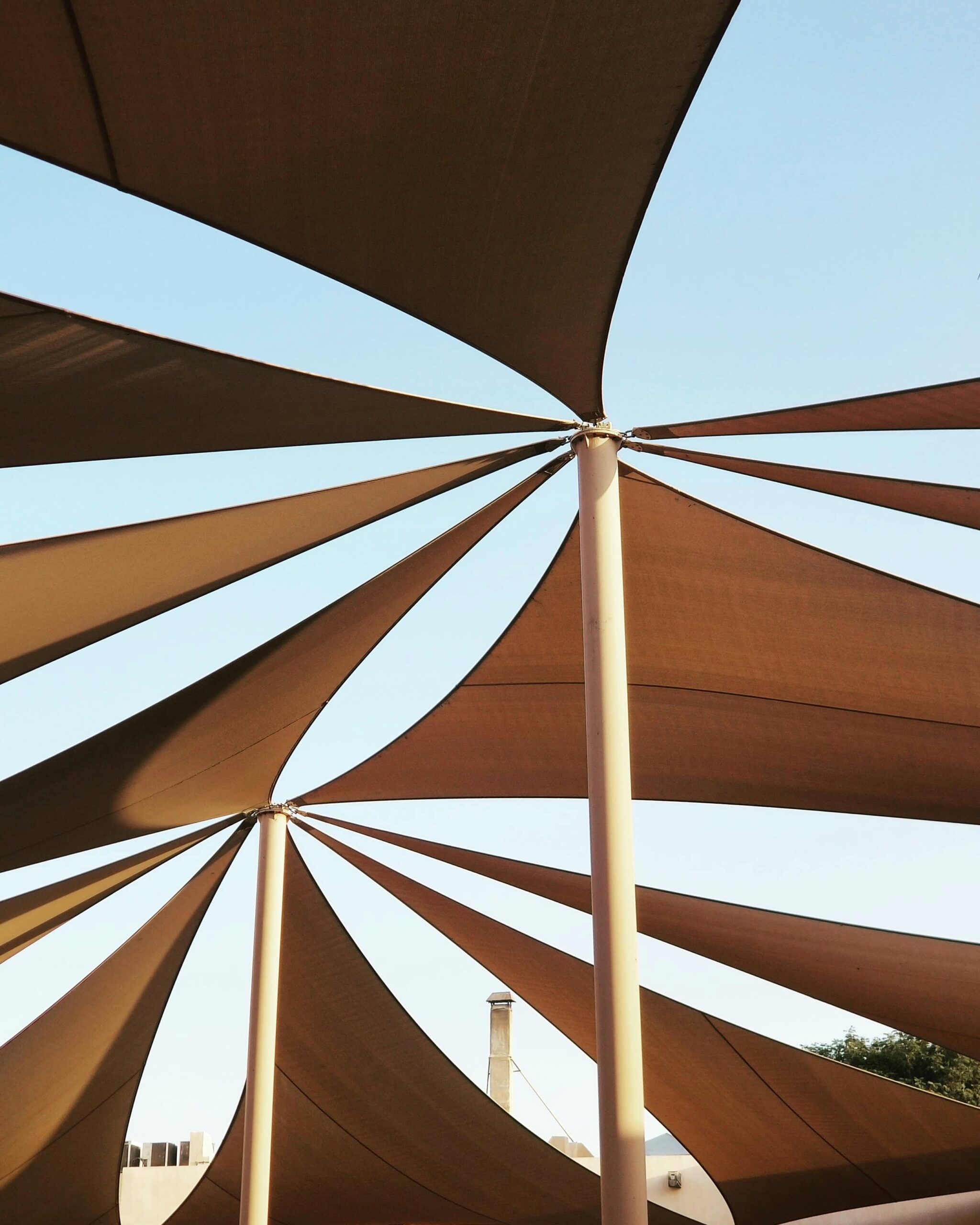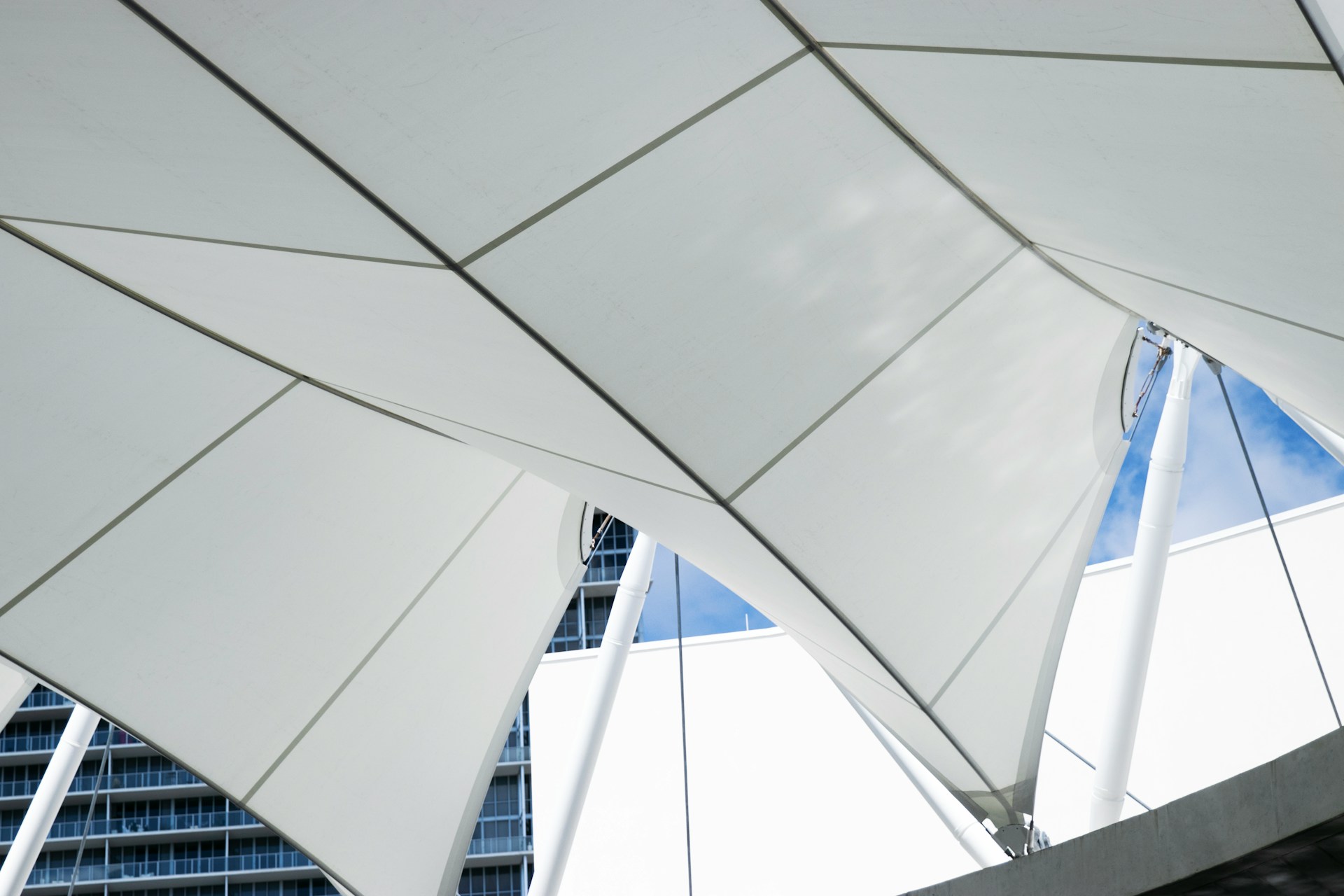Tensile architecture is quickly becoming a popular way for designers and engineers to build smarter and more sustainable designs. With its lightweight materials and flowing, sculptural forms, it offers a fresh take on what modern structures can look like and how they function. These systems leave a lighter footprint on the planet and are becoming the go-to for those pushing environmentally friendly design.
The Building Blocks of Tensile Structures
Every tensile fabric structure is a mix of various materials and mechanics that work together to create lightweight, durable structures. Traditional buildings rely on heavy beams and rigid supports, whereas tensile structures use pulling forces to stay upright and stable. The fabric can span across large areas.
The fabric needs cables, beams, compression rings or mast support to cover a range. The system works by stretching the fabric tightly over these supports, creating a balance of tension and compression that can handle environmental loads.
Depending on its coatings and maintenance, tensile membranes can last years, as the materials used protect against UV rays and pollution and reduce dirt buildup.
The fabrics used in tensile architecture are unique. These high-performance materials can stand up to elements while still being flexible and light.
- Polytetrafluoroethylene-coated fiberglass: Extremely durable, with excellent resistance to chemicals and UV rays and can last several decades, making it suitable for sustainable development.
- Polyvinyl chloride-coated polyester: Cost-effective and versatile and often used in large-scale projects. Engineers can also treat it with polyvinylidene fluoride for improved longevity and self-cleaning properties.
- Ethylene tetrafluoroethylene: A transparent polymer used for structures like stadiums. It is lightweight and allows for maximum natural light.
- High-density polyethylene: Offers high light transmission while helping regulate internal temperatures — ideal for creating bright, airy environments.
Types and Examples of Tensile Architecture
Tensile structures come in numerous shapes and sizes but fall under three types of classification.
1. Linear Tensile Structures
Linear tensile comprises members that withstand linear forces. Think of cable-suspended bridges, cable-stayed canopies and open-air walkway coverings. The cables look as if they’re draping but carry loads on a single axis, allowing for wide spans without conventional beams.
The Dubai Expo 2020 Walkway Canopies implement this construction and design. The shaded canopies across the Expo site get support from the linear cable systems. Created from i-Mesh textile, the project incorporates elements that allow the canopies to remain open and unobtrusive. It is the first project of its kind to produce only 3% material waste, compared to the industry-standard 25%.
2. Surface-Stressed Tensile Structures
This type uses membranes or fabric surfaces that are under continuous tension. The pressure offers an even distribution across the surface, creating minimal, flowing shapes — often used in roofing and shading solutions.

One project that implements this design is SoFi Stadium. This stadium has a massive ETFE roof canopy with a steel frame and columns used for support. The lightweight, transparent membrane spans 1.3 million square feet and lets natural light in while protecting spectators from the elements.
3. Three-Dimensional Tensile Structures
These structures use a combination of tensioned fabric and multiple anchor points to create intricate, sculptural forms. They are awe-inspiring architectures often used in public installations and performance venues.
The Jewel Changi Airport Canopy in Singapore uses a three-dimensional tensile architecture. The innovative toroidal roof incorporates steel and glass and integrates a tensional support system to allow for the world’s largest indoor waterfall and a forest valley garden.
How Tensile Structures Are Revolutionizing Sustainable and Aesthetic Design
Tensile systems may captivate passersby, but they also reshape the world’s opinions about sustainable building. Through form, function and environmental responsibility, they offer solutions that are light on resources but substantial on impact.
Efficient Usage of Material
Because tensile structure design relies on tension instead of mass, they use far less material than conventional construction. The carbon footprint often decreases as a result, especially during manufacturing and installation. The membranes can cover vast spaces using minimal textiles, reducing waste and the demand for energy-intensive components like concrete or steel.
Leverages Natural Resources
Tensile membranes are typically translucent, allowing buildings to take full advantage of natural daylight. They reduce the need for artificial lighting during the day, cutting down on electricity use. In warmer climates, coatings can also filter UV rays, keeping interiors cooler while still letting in light.
Reusable and Recyclable
Many tensile fabrics are recyclable. At the end of their life span, engineers can repurpose or recycle these membranes, unlike traditional building materials that mostly end up in landfills. Some systems also enable disassembly and reuse, creating circular sustainability.
Supports Green Roofs
Green roofs are excellent for reducing heat absorption, staying 30 to 40 degrees Fahrenheit cooler than traditional rooftops. This ability reduces the effects of urban heat islands and improves energy efficiency. Integrating tensile architecture can enhance green roofs’ impact.
These designs’ lightweight nature allows for creative rooftop solutions where heavily vegetated roof systems could be a challenge. For instance, tensile canopies can shade and insulate green roofs, further reducing surface temperatures.

Flexibility in Architectural Creativity
Tensile architecture can take on almost any shape, from organic curves to geometric forms. Therefore, it’s ideal for architects aiming to make a bold visual statement while keeping sustainability in focus. Molding these structures to the site’s needs encourages more integrated and thoughtful design.
Blends in Naturally With Surrounding Environments
Tensile designs often feel like they belong to the landscape. Their light, airy appearance makes them visually unobtrusive, blending seamlessly with natural and urban environments.
Rethinking What’s Possible With Fabric and Form
Tensile architecture provides sustainable and stunning design. These structures push the boundaries of what modern construction can achieve by using fewer materials, inviting in natural light and offering flexibility in form. As the demand for sustainable building practices grows, tensile structures are increasingly practical ways for shaping a better-built environment.











